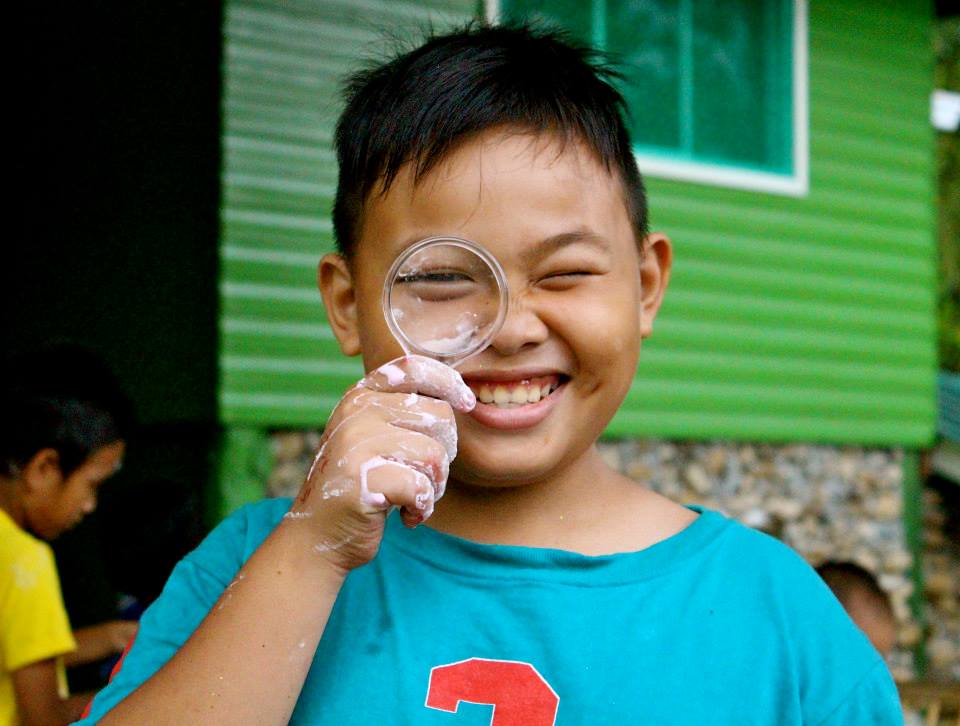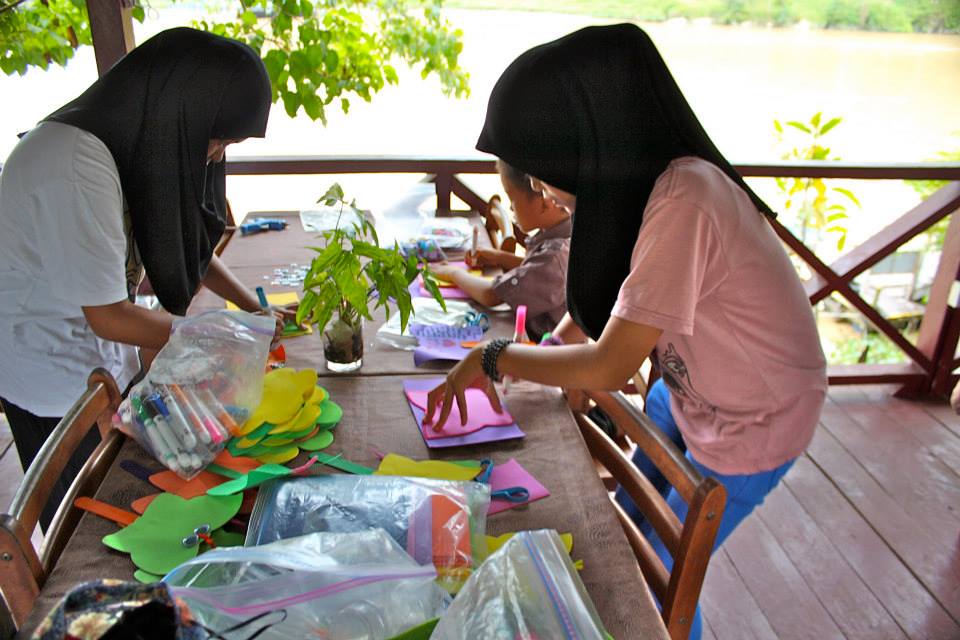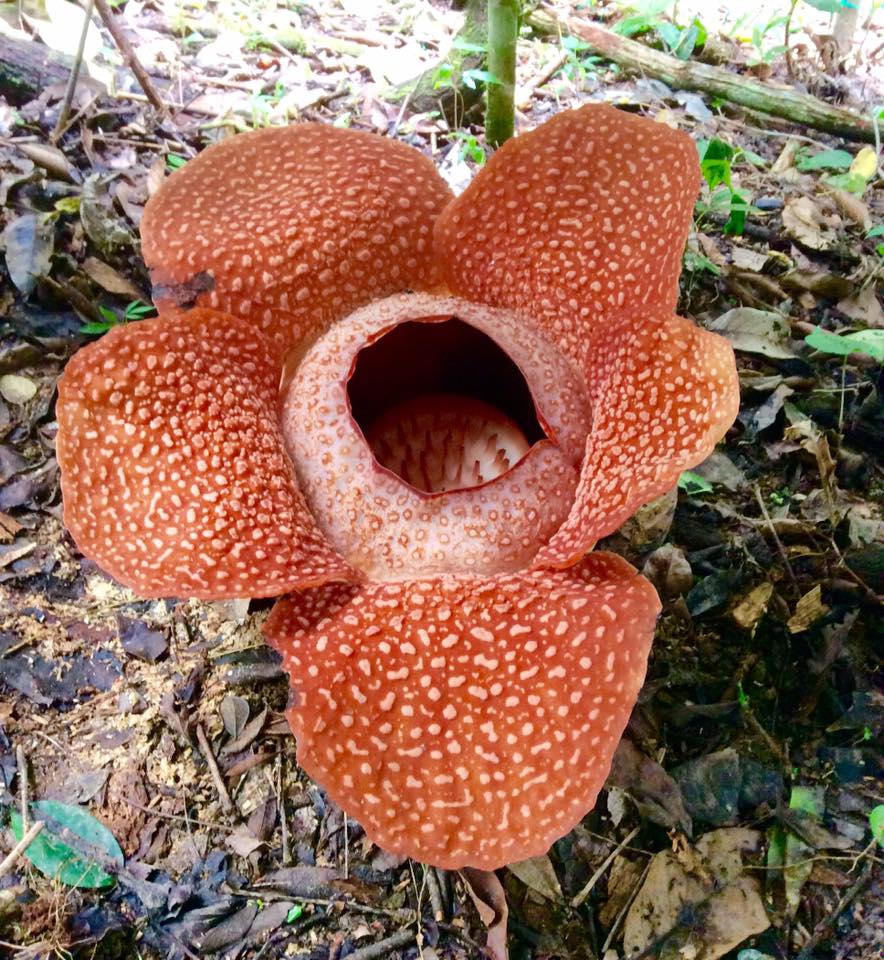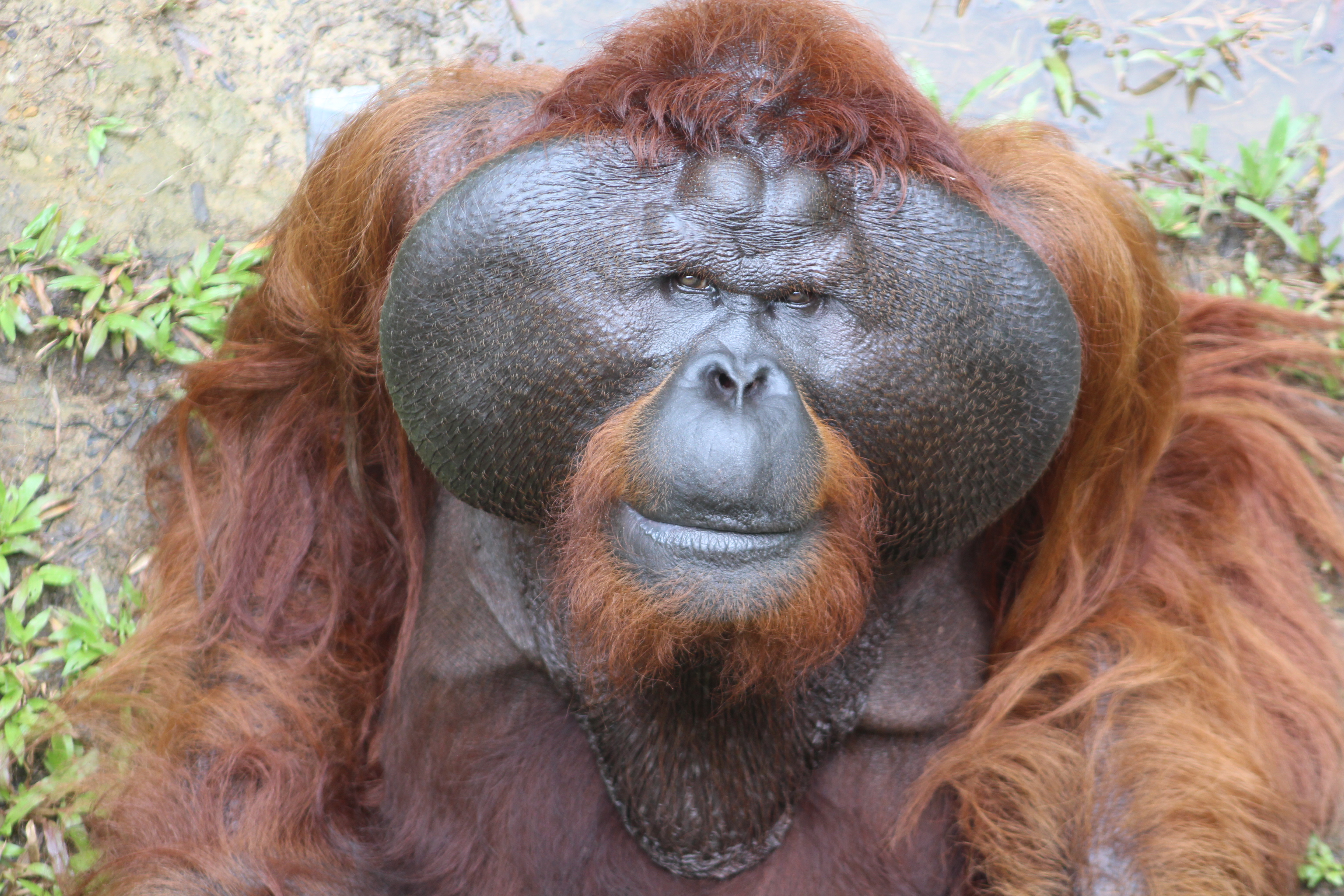Before I had a blog, I wrote email updates about my travels. For my first Throwback Thursday post, it’s time to get the Borneo section of this blog started.
This was written on December 6, 2014, after my first Nature Explorers class in Borneo. I was lucky enough to return to the same village for two more educational programs before departing Borneo a year later.
Dear friends, family, & students,
I am writing to you from the other side of the world to ask you to consider supporting my volunteer work with environmental education in Borneo.
Borneo is the third largest island in the world and is about the same size as the U.S. state of Texas. It is a place full of unique natural diversity, intriguing cultural history, and rapidly deforesting ancient rainforests. I will be teaching Nature Explorers International (NEI) programs to local children, photographing wildlife for educational publications, and spending six months as a volunteer for Orangutan Foundation International (OFI).
Last week, I taught an NEI program to over 60 children in the Malaysian state of Sabah in northern Borneo. The children of Sukau spent three afternoons exploring their environment, creating art, and playing games. The first day, they learned the ecological significance of insects and spiders. We played a pollination game, acted out the life-cycle of a butterfly, and made stick puppets.
Magnet fishing poles were a big hit on cold-blooded vertebrate day, as well as amphibian slime, and tadpole discoveries. Proboscis monkey masks made their debut in our final class along with an exciting game of bird behavior bingo. The children were enthusiastic, appreciative, and respectful, and the staff of Sukau Greenview were helpful and accommodating.
As I walked through the village on my last morning, small voices rang out from open air windows. “Amalia!” A pitter patter of young feet and laughter trailed behind me: “Amalia,” they called, “I will miss you!” Tears welled with a smile that was both sad and happy, proud and meek. After only a few short days, I had impacted them, but how much? The reality is that I am not likely to see them again. Will their memory of Nature Explorers fade or stay with them? How much of a difference have I really made on their lives and how will I ever know?
How can I do more is a question that I am constantly trying to answer.
One of my solutions is to publish children’s books about the wildlife of Borneo. I will use my wildlife photography as the illustrations for exciting educational animal adventures. These books will be published in multiple languages and one day distributed to local children.
The children of Sukau are lucky to live in an area where the forest is protected, wildlife is abundant, and tourism is the main industry. For much of this biologically diverse hotspot, that is not the story.
Borneo has one of the most rapid deforestation rates in the world. At least 30% percent of their forest cover has been lost in the last 40 years.
These ancient rainforests are some of the oldest on the planet and are home to a high number of endemic species. Most of the deforestation is due to the palm oil industry. An African palm is planted and fertilized to create a monoculture over large tracts of land. Forest patches are fragmented, corridors are filled in, and animal populations become isolated.
Along the lower Kinabatangan, the Sabah state government has protected a 100 meter riparian corridor. Reforestation projects are in full swing to increase this buffer on both sides of the river. Tree species grown in local nurseries support the regional economy, and NGO’s are working closely with the state government and volunteers. The goal is to have all Corridor of Life areas planted by 2020.
Borneo is a place like nowhere else on earth. Herds of pygmy elephants snorkel across wide expanses of river to struggle up muddy banks. The song of the Bornean gibbon echoes through the treetops, as giant crocodiles lurk on shadowed shores. Wild orangutans make their nests in an ancient canopy, while the longest snake in the world slithers on the forest floor below. The river Kinabatangan is wild, untamed and free, the real Borneo.
Education is imperative to conservation.
The future preservation of the lower Kinabatangan River is rooted in education. Very few resources exist for children both internationally and locally about the endangered wildlife found here. My Borneo children’s series will include books on the following subjects: endangered animals of borneo, monkeys of borneo, proboscis monkeys, pygmy elephants, and more!
I plan on involving U.S. children and Indonesian children in cultural exchange projects and unforgettable interactive educational experiences. Please let me know if your school or home-school group would be interested in getting involved!
Show your support through a simple $5 donation, and in turn I will work hard to show you a part of the world that most people never have the opportunity to see. Let me share this experience with you through my eyes. Let me teach you the lessons I learn, bring you along with the struggles, and rejoice with you during the triumphs.
Donations will go directly to art supplies for the children and to families for home-stays while completing volunteer work. I encourage you to follow along with this adventure and learn about this very special island through exploring the educational links and resources that I will provide.
I am an environmental educator, a writer, and a photographer. I have 15 years of experience teaching NEI classes in 12 countries and throughout the United States. This has led to developing a unique interactive environmental curriculum that has proved to be effective and successful anywhere in the world.
I find that there is an innate desire in children of all backgrounds to better understand our earth. I have always encountered a universal reaction to my educational methods that crosses language and cultural barriers. I focus on classification and conservation of local species and ecosystems (particularly those of primates), work closely with communities of rural villages, and partner with educational and environmental organizations.
Each environmental lesson is tailored to the individual region and involves a nature walk, games, and art. I believe in incorporating creative artwork, educational crafts, and performance art as important mediums to enhance lessons and perpetuate learning throughout the community. The joy and pride that children feel in having the opportunity to express their individual creativity makes them more likely to educate others while sharing their artwork. I always remind my students to use their projects as a teaching tool, and to continue exploring and discovering.
I have a Master of Science in Ecological Leadership and Education and a BA in Environmental Studies with minors in Marine Science and Anthropology. I founded Nature Explorers International and work to help children foster a greater understanding of their environment, an excitement for learning and exploration, and a deep set love of nature that lasts a life-time. If you support this mission, please consider supporting this project and receive great rewards at every donation level! Go Fund Me
“Most tourists, they come to see the nature, take pictures of the nature. They do not come to teach the children about the nature. It is very exciting for us while you are here.” My friendly host said with a big smile.
 “What we study most in school is English and science!” Hana, my eager young assistant and translator told me proudly. Local teenagers came early and stayed late each day to play the role of volunteer assistant and translator.
“What we study most in school is English and science!” Hana, my eager young assistant and translator told me proudly. Local teenagers came early and stayed late each day to play the role of volunteer assistant and translator.
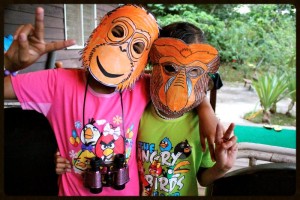 You could be an orangutan and a proboscis monkey too! For a $5 donation you will be emailed templates to these brand new Nature Explorers primate masks along with accompanying educational materials. Great gift for the children in your life!
You could be an orangutan and a proboscis monkey too! For a $5 donation you will be emailed templates to these brand new Nature Explorers primate masks along with accompanying educational materials. Great gift for the children in your life!
Nature Walks with the binoculars, magnifying glasses, and bug boxes that I have brought provide children with a fun and interactive outlet for exploring their outdoor environment. The first two Malay words I learned were serangga and labah labah (insects and spiders).
Original post in Newsletter Form





















